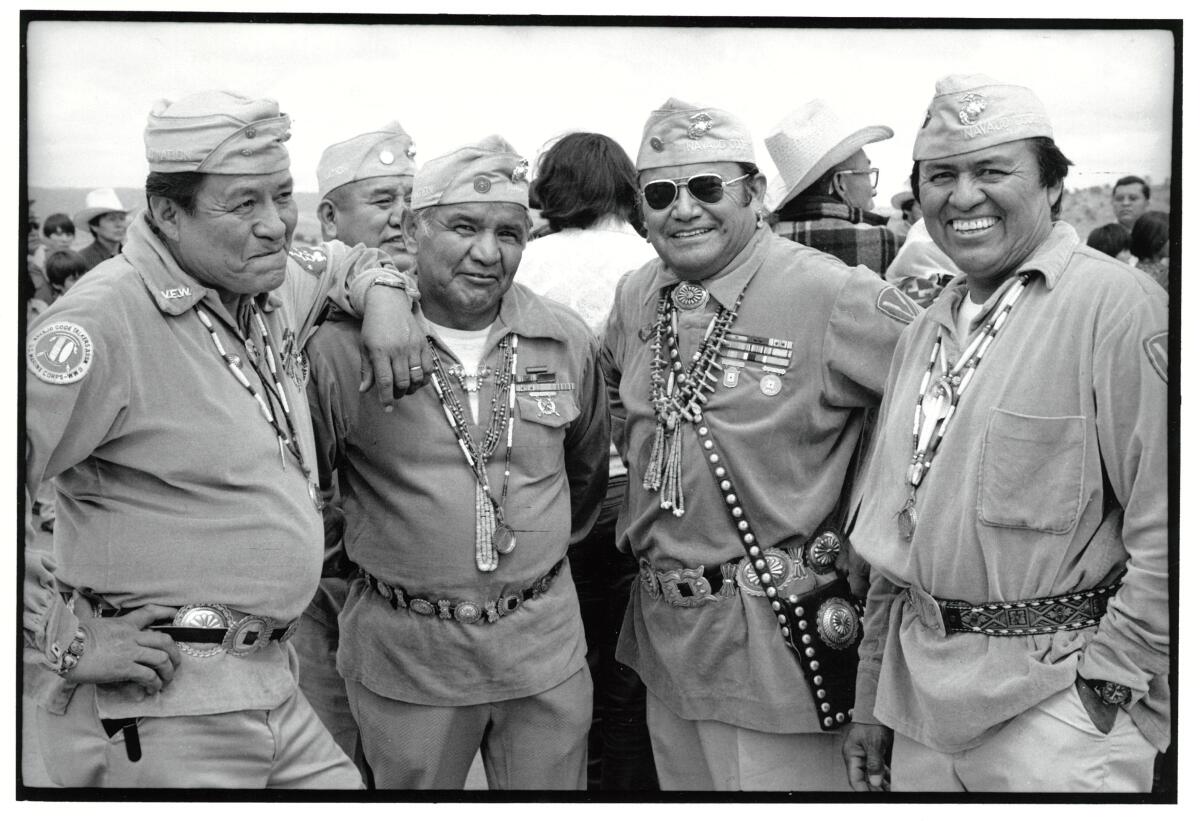Letters to the Editor: The Navajo language saved American lives — after the U.S. tried to kill it off

- Share via
To the editor: History is full of ironies, including the story of the amazingly successful Navajo code talkers during World War II. As a Seneca/Apache Native American, I thank The Times for its article on the code talkers and photographer Kenji Kawano, who became acquainted with several of the code talkers long ago.
Here’s the irony: The very Navajo language central to this story was targeted by the U.S. government for elimination.
Starting in the 1860s, Native American children were taken from their families and forced to attend boarding schools. To the U.S. government, its policies of dispossessing Native Americans and colonizing their land amounted to “kill the Indian, save the child.” That was the mission of the Indian boarding schools.
Fortunately, the Navajo language survived.
It is also ironic that Kawano, being Japanese, chose to photograph and embrace the Navajo people, whose language was instrumental in defeating Japan in World War II.
The U.S. Marine Corps says that the Navajo code was the only military code never broken by an enemy in modern history. It saved thousands of American lives in World War II, but the code talkers returned home without any praise or honor for their crucial accomplishment — yet another irony.
Harold Printup, Mar Vista
..
To the editor: Part of the way through your front-page article on the Navajo code talkers, I thought of recent criticisms that paint The Times as too subjective in its coverage. This article was great journalism on a worthy historical subject concerning journalism itself.
Then, I read your piece on the In-N-Out store closure in Oakland, another well-written and well-researched, and objective, article about out-of-control crime. All sides of the divisive issue were covered.
I grew up with The Times’ sports section open on our breakfast table. Jim Murray will always be one of my literary heroes. His writing spurred me to read more of the paper.
Today as then, I both grin and frown reading The Times, and I understand that neither conservatives nor liberals will ever be happy with every story — but that is good.
Robert G. Ferguson, Atascadero, Calif.
..
To the editor: The stirring and deeply moving account of how Kawano won the trust of the Navajo code talkers over time and gradually broke open their stories, in beautifully captured word and image, leaves an indelible afterthought.
The Japanese Americans I grew up with in Honolulu in the 1950s withheld their stories for years under the code of “shikata ga nai” (it cannot be helped), until their children and their grandchildren led them gently and reverently into the light.
Nicholas Hormann, Pasadena
..
To the editor: The black-and-white photograph of four Navajo code talkers included with this article captures so much of the essence of these men — confidence, joy and pride.
This is the breathtaking work of a true visual genius who understood the power of black-and-white photography.
Frederick Miller, Los Angeles





